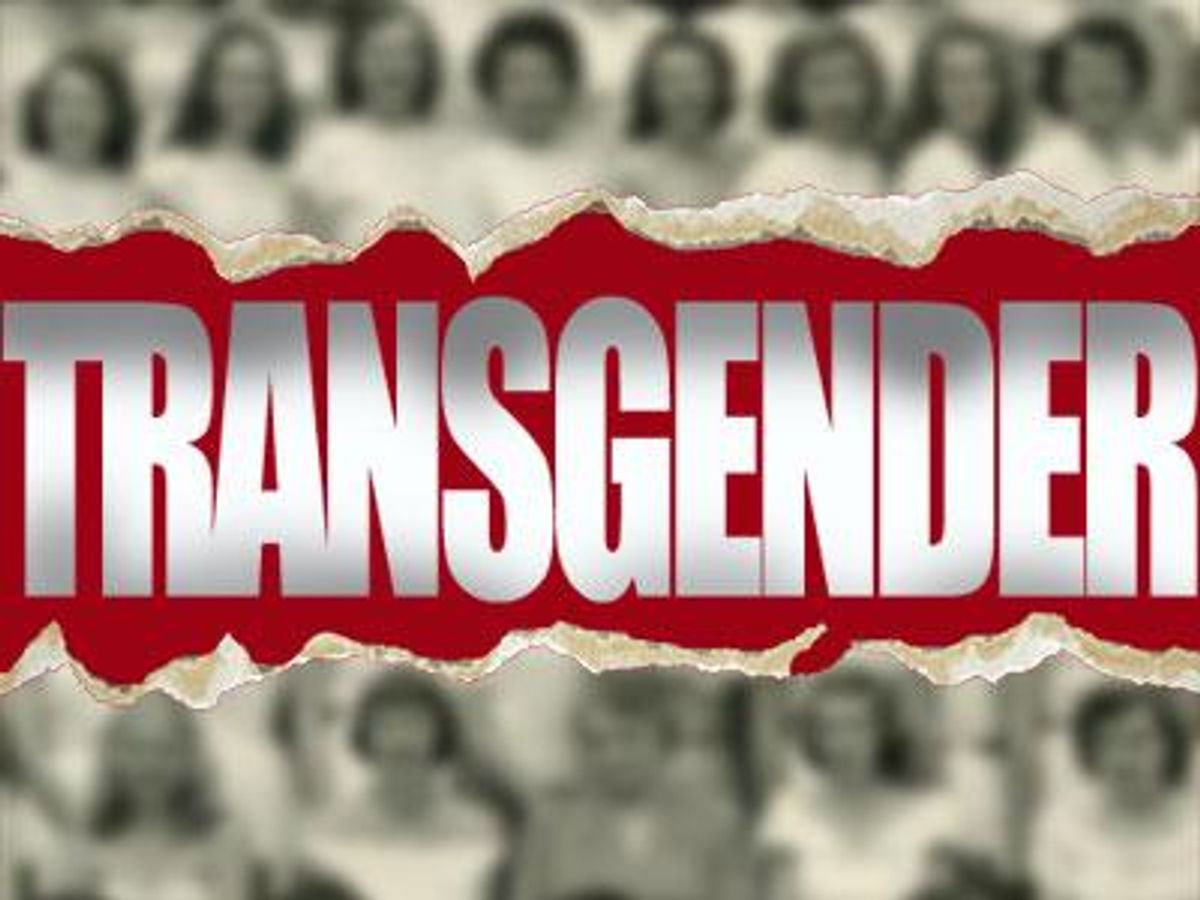Several years back, I was the facilitator of a discussion and support group for transgender teens at San Diego's Hillcrest Youth Center. Every Friday night, between two and 10 young trans people talked with myself and each other about issues ranging from coming out to parents and friends to medical transition to surviving and thriving at school.
During one group, a 16-year-old trans man, who I'll call Damian, told me he was thinking of applying to Mills College. He'd heard that Mills was a great place for LGBT students and he liked its proximity to San Francisco. At the time, Damian identified as genderqueer and was considering medical transition steps such as testosterone and top surgery -- but he wasn't sure. He thought he'd probably remain happy as he was, genderqueer and androgynous.
"If I were you, Damian, I'd think a few years ahead," I told him. "You might decide you want hormones or surgery. You might not. But if you do, you'll end up being a man in a woman's school."
He nodded thoughtfully. Damian was a smart kid, but like many teens he wasn't used to thinking long-term. This is exactly how a lot of young trans men end up at women's schools. They crave the warm embrace of a tight-knit, queer-friendly community in which they don't feel so different. A women's college is a beacon of hope, full of promise to fulfill that desire.
But what happens next?
A recent article in The New York Times gave us a glimpse. Women's schools like Smith and Wellesley now have burgeoning trans male populations. These young men, in some cases, are now pushing their schools to recognize them for who they are: Men. Not only that, but they're asking, sometimes demanding, that a fundamental change occur in the culture of sisterhood that defines these colleges. Some trans students at Wellesley, for instance, are literally asking that "sisterhood" be replaced with the gender-neutral alternative "siblinghood" in school materials.
As a fellow trans man, I have empathy for these guys. Our genders are hard-won. Most of us struggle to be seen by family, friends, partners, coworkers, and strangers for the men that we are. It's an exhausting fight, and one that can feel endless and hopeless.
But a women's college is not the place to wage this war. Women's colleges are places that were also hard-won, built defiantly in a time of all-male higher education. By their very definition, they're places where women embrace their womanhood, whatever form it may take. Asking the students and faculty at these schools to mute the celebratory calls of sisterhood is simply unfair.
So what's a trans man at Smith or Wellesley to do? Must he give up the space he's carved out, worked for academically, the spot where his friends go to school, where he knows the customs, traditions, and the very special language of a place defined by "sisterhood."
Simply put: Yes. If he can swing it financially and academically, he should transfer. It's not an easy choice, but transition is full of tough choices. For many of us, walking away from all-women's spaces is something we grieve for years to come.
Does that mean a women's college has the right, or even the obligation, to force a trans male student to leave when he comes out? Certainly not. These days, trans people live their lives more and more openly, and a great many of us come out as trans in our teens or early twenties. An all-female college must accept the reality that a class of 500 incoming freshwomen may not all remain women. Forcing a trans student to leave without offering him a place to go is not fair either.
So what's a school to do? There are options beyond what Wellesley, the school featured in The New York Times article, is doing. The sisterhood doesn't have to break or bend in order to shepherd a trans male student into manhood. Transfer may be hard, but schools do have the power to make it easier.
Smith, for instance, could approach one of the many nearby co-ed schools of comparable size and quality, say Amherst, and create an "escape route" of sorts: If a student comes out as trans while at Smith and wishes to live and be acknowledged as male, then guarantee him an easy move over to Amherst if he chooses it. Transfer his credits, his financial aide package, and give him a spot in a gender-neutral dorm. Provide these students with choices, rather than leaving them to do it all on their own in the midst of what is often already a tumultuous time in their lives.
But there's a more pressing way in which women's schools can support trans people: Start admitting and supporting transgender women.
Currently, there are only two all-women colleges in the United States (and possibly the world) that accept trans women who have not changed their gender marker to "female" on their legal documentation: Mount Holyoke College and Mills College. Since only a fraction of trans teens have familial support, and even fewer have access to the resources necessary to change their birth certificate, driver's license, passport, and Social Security information, this policy excludes almost all trans female applicants.
Even when trans women do make it onto an all-female campus, they're often not embraced by their cisgender (nontrans) peers. Recently, I had the chance to speak with a group of Mills undergrads about the gender politics on their campus. When I asked how trans women were treated, a genderqueer student named Kai (who uses the gender-neutral pronouns "they" and "their") simply shook their head in dismay. "Not very well," they said.
But despite Kai's dismal report, Mills, the school that young Damian was considering, is on its way to redefining itself as something other than a women's school. A Mills senior and cisgender female ally recently spoke to me about a change she's seen at her school in the past four years. Mills, she said, was starting to feel like "a college for people of marginalized genders" -- trans men, trans women, cis women, and nonbinary folks.
Perhaps this is a path some women's colleges will follow Mills down. Most probably won't, however, and none should have to. Sisterhood should still have a place in academia as long as there are women -- cisgender and transgender -- who desire it.
As his college search continued, Damian made a list of small co-ed liberal arts schools with thriving LGBT communities. He's now attending one of them and he did choose to medically transition. He is happily embracing his trans manhood, surrounded and supported by people of all genders.
Dr. ADRIAN SCOTT DUANE is a math nerd, an activist, and a transsexual man. He currently designs math learning software in the Bay Area. In his spare time he writes, produces videos, and organizes community events with the goal of spreading accurate information about the transgender experience.


















































































